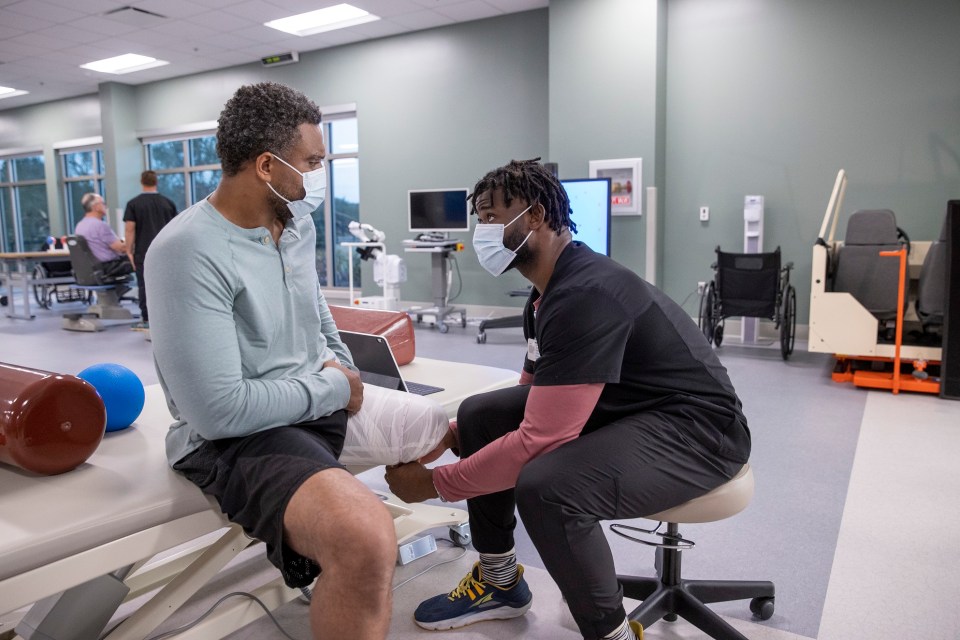It is safe to say that most physical therapists (PTs) enter the profession to make a difference in people’s lives. When you ask PTs what keeps them going when they get frustrated, many will tell you that it’s the true joy that comes from seeing patient progress and achieving individualized goals; many sweaty hours of heavy lifting lead to that one moment that their patient can stand to hug a loved one, walk a daughter down the aisle, return to doing something that they love or pick up a child without pain. The unfortunate truth is that today’s healthcare system is overburdening many PTs and eroding the joy from their work.
While burnout in PTs is an under-researched area with limited, outdated data, a recent survey-based study conducted by WebPT found that 46.8% of members of the rehabilitation therapy industry feel more burned out now than compared to pre-COVID-19, and only 19.6% of these professionals reported not feeling burned out now or pre-COVID-19. Let those numbers sink in—nearly half or more of physical therapists are feeling burnout, so if you fall into this statistic, you are definitely not alone.
What is Burnout?
Although we all have an intuitive sense about what burnout is and what it feels like in ourselves, it is often defined by three components:
- Emotional exhaustion: the state of feeling emotionally drained as a result of accumulated stress
- Depersonalization: the depletion of empathy, caring and compassion for patients and others
- Decreased sense of accomplishment: feeling like nothing you do makes any difference
What Drives Burnout Among Physical Therapists?
Burnout among physical therapists is complex and can be caused by a wide variety of factors, but the top drivers include unrealistic productivity requirements, changing reimbursement structures, continually increasing costs of rigorous foundational and continuing education without comparable salary increases, limited opportunities for clinical growth or feeling stuck, threatened autonomy, feeling undervalued, and managing unrealistic expectations.
What are Potential Consequences of Burnout?
Burnout can affect both individuals and the workplace. Many studies have identified the health effects experienced by people who are burned out, which include depression, loss of energy, fatigue, increased healthcare needs and substance abuse issues. In the workplace, burnout can further lead to job turnover, decreased productivity, absences, compromised patient care and poor outcomes due to employee disengagement.
What You Can Do to Prevent Burnout
Combating and preventing burnout among physical therapists is more complex than all of those “self-care” methods that you may have already tried. While we may not have all of the answers, here are some suggestions:
- Complete the stress cycle: Stressors on the job and in life are inevitable. Emily and Amelia Nagoski, authors of “Burnout: The Secret to Unlocking the Stress Cycle,” explain that each stressor you encounter leads to the initiation of an internal stress cycle, and your body chooses fight, flight or freeze in response. Completion of a stressful task such as ending a session with a difficult patient, paying a bill, surviving a difficult meeting or making it through a challenging day are not enough to end the stress cycle itself. Every stress cycle needs to be completed in order to prepare your body to move on, and if the cycle is never completed, the stress response builds. When you experience a stressor, the Nagoskis suggest engaging in activities such as physical motion, breathing, positive social interaction, laughter, affection such as a 20-second hug, crying or creative expression to end the stress cycle.
- Give yourself purpose: In the wise words of Howard Thurman, “Ask yourself what makes you come alive and go do that because what the world needs is people who have come alive.” Use your signature strengths, such as creativity with interventions, being an active listener, motivational interview strategies or building strong personal rapport with patients and co-workers on a daily basis to contribute to making a difference. Continue to fuel your curiosities and professional development through self-reflection and learning opportunities.
- Build a circle: Surround yourself with people you trust and who make you feel safe. This can look different for everyone and involve one person at a time, a pet, a divine power and/or cooperative groups. Humans thrive on balancing connection and autonomy. Loneliness can perpetuate a stress cycle leading to feelings of rage and sadness.
- Commit to work-life balance: Master efficiency and time management through methods that work best for you. This may look like pre-made templates, saved shortcuts, prioritizing daily responsibilities, etc. Do not feel guilty about taking paid time off within reasonable company protocols, and set boundaries to avoid continuing work as part of your home life.
- Participate in organizational and professional opportunities: It is easy to express frustration at the state of the PT industry, but did you let your American Physical Therapy Association membership lapse? The more people who join the APTA, the stronger our impact can be on regulatory policies and practice. You can also join various other professional organizations to influence change, such as the PT political action committee, employer-based staff advisory councils or regional groups.
Physical therapy is an amazing profession focused on helping others through daily human interaction and creative, autonomous care based in movement. It is critical to address the prevalent issue of burnout within the field to further support its professionals and develop new graduates.
If you are in crisis you can reach out for help at The National Suicide Prevention and Crisis Lifeline or call 1-800-273-8255 (TALK) or 988. For more mental health and wellness resources check out APTA Fit for Practice and Mental Health America.
The content of this site is for informational purposes only and should not be taken as professional medical advice. Always seek the advice of your physician or other qualified healthcare provider with any questions you may have regarding any medical conditions or treatments.




